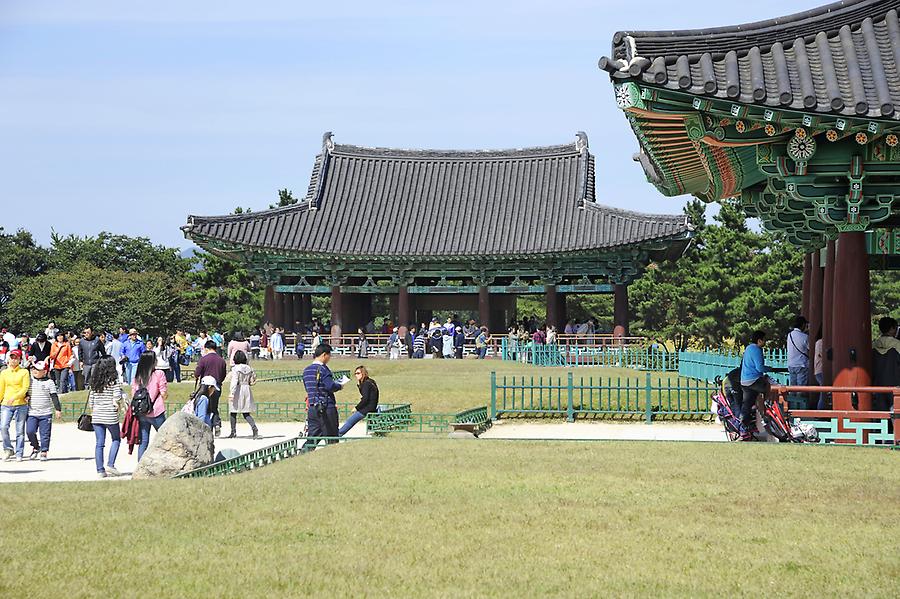Buhnwang Temple#

Buhnwang Temple, October 2011, © Gerhard Huber, under CC BY-NC 4.0 +Edu
Gyeongju was the capital of the Silla for nearly 1.000 years. Rulers of the Silla dynasty ruled over a mighty empire since 57 A.D. It was constantly in rivalry to two neighbouring states which were finally conquered in 688. Gyeongju became the capital of the entire Korean peninsula for the next 300 years until the Goryeo dynasty took over the rule and turned Seoul into the new residence. In the first millennia Gyeongju was one of the largest cities of the world. Over one million people lived here, at a time when London or Paris only had 20.000 or 30.000 inhabitants. Gyeongju could compete with then cosmopolitan cities of Rome and Constantinople. The city was built entirely of wood, therefore nothing remains of the former glory.
Fast 1.000 Jahr lang war Gyeongju Hauptstadt der Silla. Seit 57 n.d.Z. regierten die Herrscher aus der Silla-Dynastie über ein mächtiges Reich, in ständigem Wettstreit zu zwei Nachbarstaaten, die schließlich 688 erobert wurden. Gyeongju stieg für die nächsten 300 Jahre zur Hauptstadt der gesamten koreanischen Halbinsel auf, bis die Goryeo-Dynastie die Herrschaft übernahm und Seoul zur neuen Residenz erkor. Im ersten Jahrtausend gehörte Gyeongju zu den größten Städten der damaligen Welt. Zu einer Zeit, als London und Paris gerademal 20.000 oder 30.000 Einwohner hatten, lebten hier über 1 Million Menschen. Gyeongju konnte sich mit den damaligen Weltstädten Rom und Konstantinopel durchaus messen. Da die Metropole jedoch vollständig aus Holzbauten bestand, hat sich vom einstigen Glanz nichts erhalten.